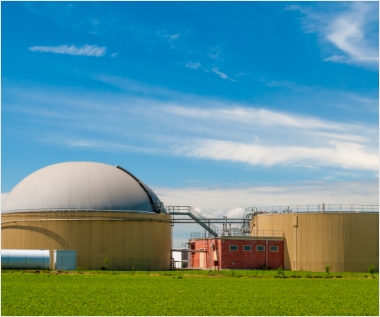
Biogas

Biogas is the result of biological breakdown of organic matter in the absence of oxygen. Comprising mainly of methane and carbon dioxide, the gas is produced by the anaerobid digestion of biodegradable materials. Biogas captured from landfill and sewage plants is either used to generate electricity with gas powered engines or upgraded to be injected into national grids.
Captured biogas in its unrefined state is heavily contaminated with siloxanes. These siloxanes convert into silicon dioxide on combustion. The silicon dioxides combines with other elements in the gas and lubrication oils forming a hard compound that accumulates on the combustion surfaces. As a result, engine efficiency is compromised and unburned fuel contaminates the exhaust gases increasing emissions.
This also causes severe damage to valves, pistons, piston rings, liners, cylinder heads, spark plugs and turbochargers of gas engines.
The solution is to use a siloxane removal system; an integral part of the process is an electric process heater to provide a clean, efficient and controllable solution for process heating.


